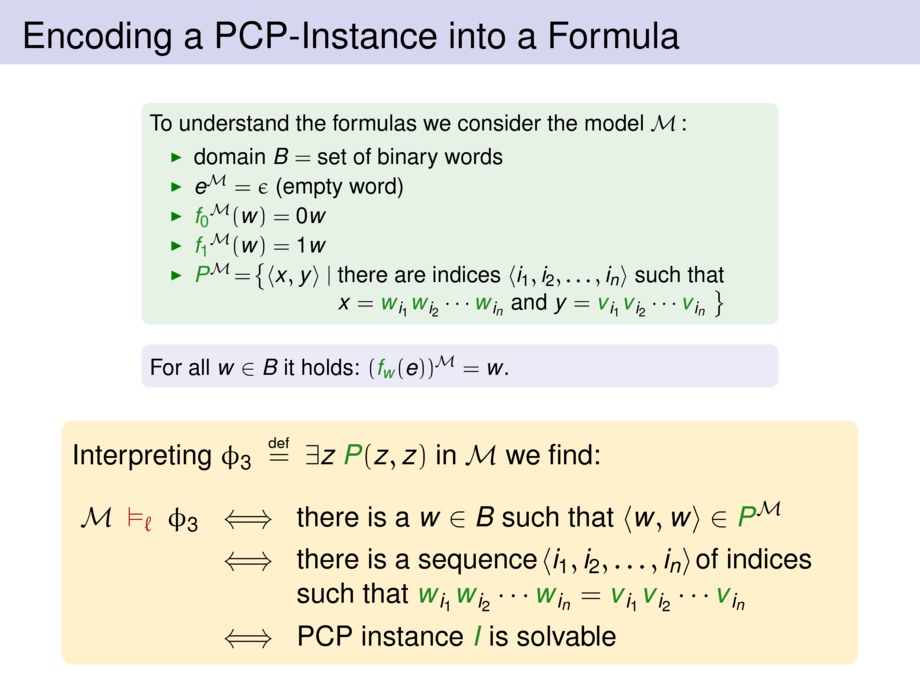



































































































101/162
\begin{frame}{Encoding a PCP-Instance into a Formula}
\begin{center}
\scalebox{.8}{
\begin{minipage}{\textwidth}
\understandmodel{}
\end{minipage}
}
\end{center}
\pause\smallskip
\begin{goal}{}
Interpreting $\aformi{3} \defdby \formula{\existsst{z}{\:\binpred{P}{z}{z}}}$ in $\amodel$ we find:
\pause
\begin{align*}
\amodel \satisfieslookup{\saluf} \aformi{3}
\mpause[1]{
\;\;&\Longleftrightarrow\;\;
\text{there is a $w\in\model{B}$ such that $\pair{w}{w} \in \intin{\sbinpred{P}}{\amodel}$}
} \\
\mpause{
\;\;&\Longleftrightarrow\;\;
\parbox[t]{0.7\textwidth}{
there is a sequence \!$\tuple{i_1,i_2,\ldots,i_n}$\! of indices\\
such that $\forestgreen{w}_{i_1}\forestgreen{w}_{i_2}\cdots \forestgreen{w}_{i_n} =
\forestgreen{v}_{i_1}\forestgreen{v}_{i_2}\cdots \forestgreen{v}_{i_n}$}
} \\
\mpause{
\;\;&\Longleftrightarrow\;\;
\text{PCP instance $\forestgreen{I}$ is solvable}
}
\end{align*}
\end{goal}
\vspace{10cm}
\end{frame}

